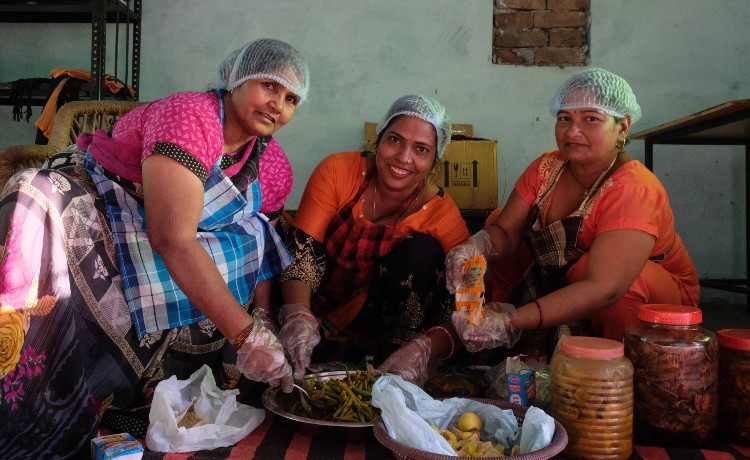In the 75 years post India’s independence our country has made significant strides towards equitable growth and development, however, much is left to be done. Adding a new dimension, in today’s world global issues like climate change, the pandemic and the impending water crisis threaten life as we know it - there has never been a more pressing time to collaborate and work together to solve these complex problems.
And there is no more complex issue, than rural poverty! Uplifting rural India is a vast and pressing task, which undoubtedly requires collective action. And whilst there are good examples of corporates, government, NGOs and philanthropists working together, it is very rare to see two or more corporates come together to collaborate in CSR.
Yet research shows that social change at scale comes from increased collaboration and better coordination across sectors, instead of mere individual interventions - small local efforts to address complex issues such as water, poverty, unemployment and livelihoods can make little difference. Driven by shared values, programs, and actions, with diverse skillsets, different stakeholders can and should work together - but in an effort to achieve a common desired goal.

It can be done, and has been done! Here are 4 incredible collaborations that act as solid examples of how organisations can come together to solve some of rural India’s problems.
1. HDFC Bank Parivartan & ACF (Corporate): HDFC chose Haridwar, Uttrakhand as the location to work in as results indicated poor health, low agricultural productivity, poor education infrastructure and depleting groundwater. These two giants came together to collaborate in 2017 to design a holistic rural development program in Uttarakhand. With the success of the project, HDFC Bank Parivartan invited Ambuja Foundation to design a focused rural development program in Punjab and UP. Today Ambuja Foundation has become a trusted partner of HDFC Bank Parivartan, working across 15 sites to implement the holistic rural development program and a focused rural development program.
2. Tulip & Crowns & ACF (HNI Family): As part of their own family philanthropy and goodwill, a Dutch based family came on board with Ambuja Foundation to support any community development initiative that Ambuja Foundation was looking to offer. In the first stance they accepted the proposal to support, women, agriculture and education. The second phase they agreed to support the training of youth in Rajasthan and Bhatapara. Today they are even exploring the opportunity to support many more Ambuja Foundation projects.
3. Hinduja Foundation & ACF (Corporate Foundation): Hinduja Foundation executes the CSR of group companies in and around the operating sites of their businesses. In 2019, they invited Ambuja Foundation to implement a project on water in its core locations of Ajmer and Alwar in Rajasthan as the demand for water and the supply side was not balanced. Though the location was outside Ambuja Foundation geography, the partnership worked well and today is a water and agriculture prosperous community. Today, Ambuja Foundation and Hinduja Group are implementing the CSR work of Ashok Leyland, IndusInd Bank and Hinduja Leyland Finance - all part of Hinduja Group.
4. NABARD & ACF (Government): NABARD had initially started collaborating with Ambuja Foundation in the area of Agriculture, but today Ambuja Foundation also implements water, skill and women programs with funding and support from NABARD. Currently supporting farmers and women across 35 various projects, the relationship and trust between the two partners has gotten so strong that Ambuja Foundation was recognized by NABARD as the best implementing agency in Himachal Pradesh in the area of Watershed.

Every organization dealing in the development space comes with its unique set of abilities and offerings. And by exploring synergies together to marry expertise and experience can lead to outcomes which could be way beyond expectations build additional funds and other required assets. These assets created together could also be building better policies, awareness, research and even impact data.
And the benefits are numerous, the primary one being the extension of reach and impact. Further, there is an increase in efficiency with a pooling of resources and a reduction in wasted resources as collaborative partners learn from one another.
Here in incredible India, daunting social problems surround us - vying for scarce attention, funds and policy support. Sadly, the sheer vastness of issues means that it simply makes good sense to collectively address them – to ensure the scale and impact required to make a significant dent in social problems. Constructive collaboration in this sense, is certainly the way to go as we look to the future of development in this country.
Authored by Gayathri Balan, Lead - Partnerships, Ambuja Foundation







0 Comment